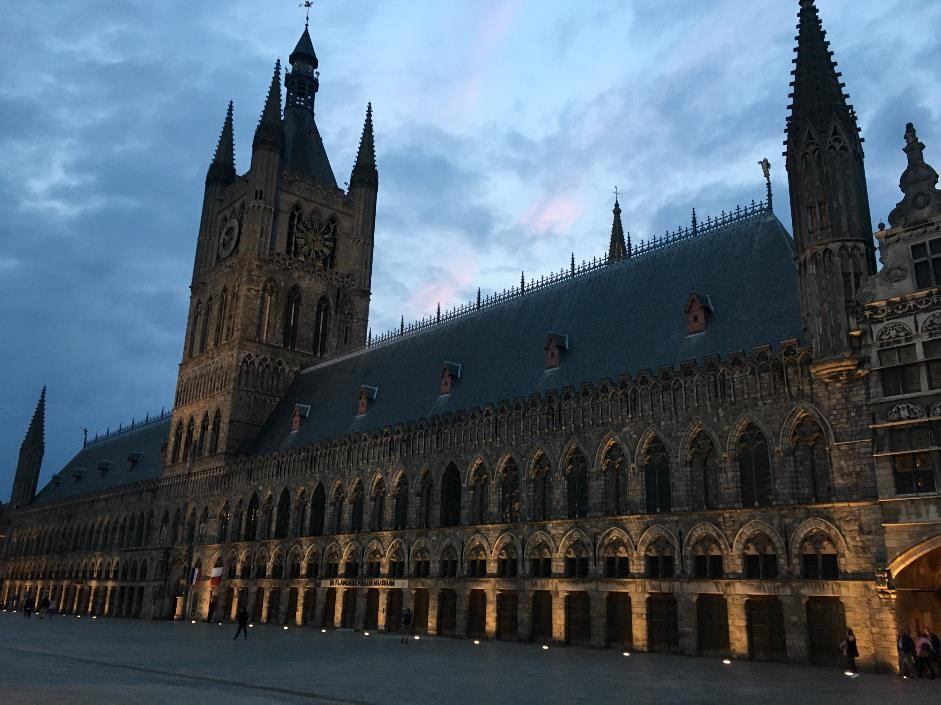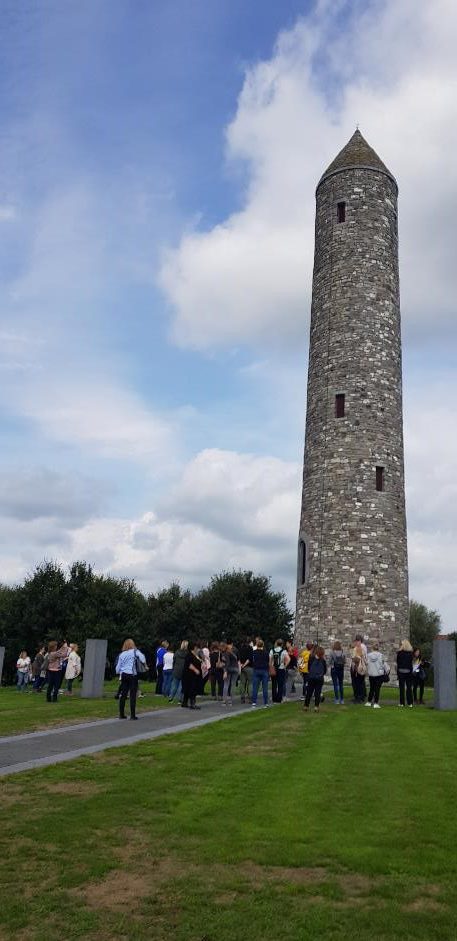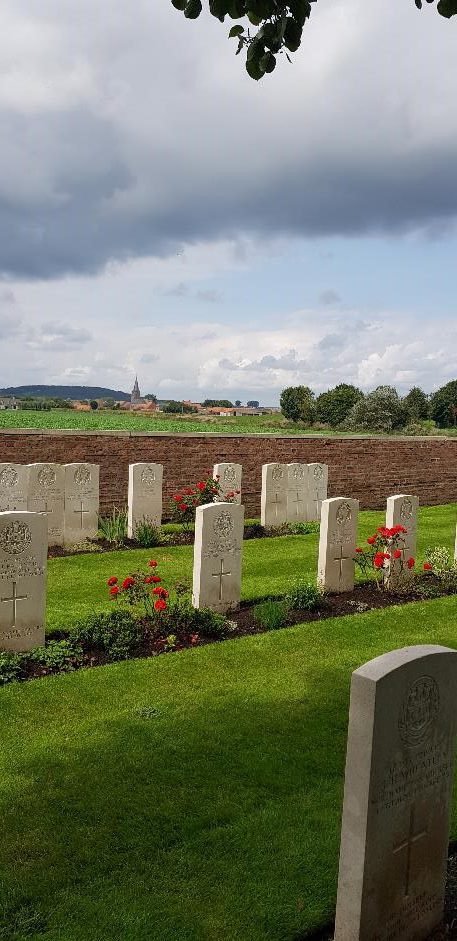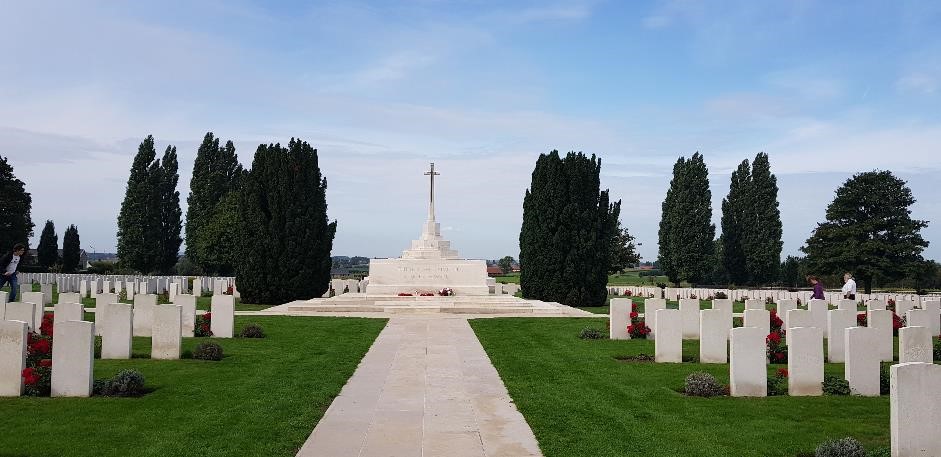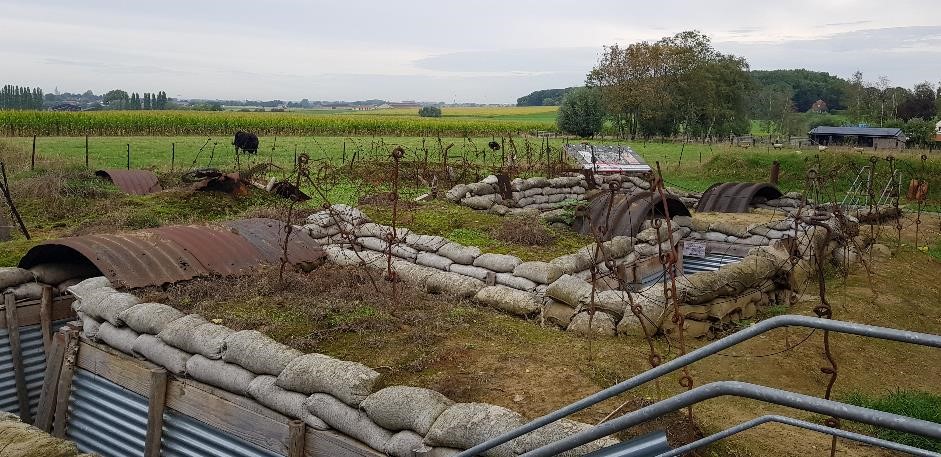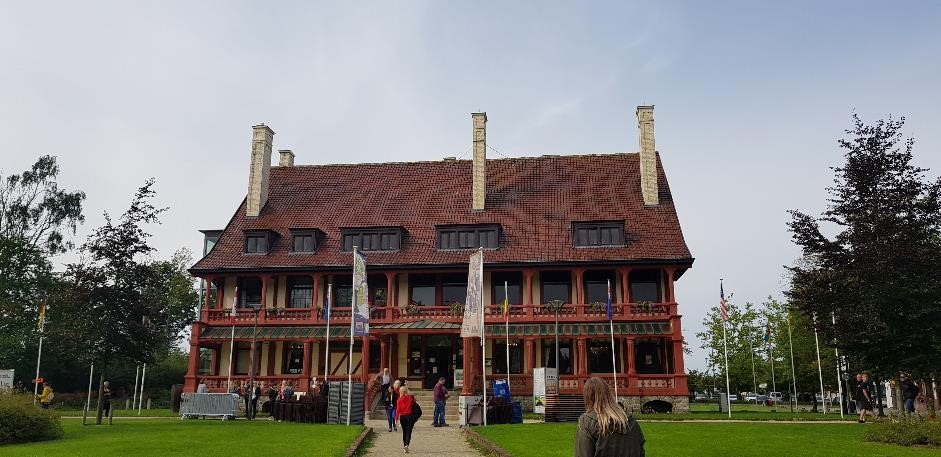
Last year members of the Rayburn Tours team, Victoria and Lauren, were lucky enough to visit Flanders Fields in Belgium for a short 3 day, 2 night tour where they were able to learn more about medicine and surgery on the front line. Victoria tells us all about her experiences of their poignant trip.
Imagining the harsh realities of warfare
Standing in the reconstructed trenches at Bayernwald it is hard to grasp how difficult day to day life must have been for the soldiers on the front line during World War I. Looking out across the peaceful lush farmlands that surround the area now, it is very difficult to imagine the harsh realities of warfare.
Here we listened to one of the Rayburn Tours expert History Tour Guides, who explained how soldiers commonly developed trench foot, a type of infection that leads to the flesh of the foot beginning to decay and die caused by standing in water for long periods of time. A real and vital addition to any tour, our historical experts were really able to bring the personal stories and experiences of the soldiers during key battles to life, helping us get a real sense of learning, understanding and remembrance.
Developments in medical treatments
By visiting important sites, such as Ljssenthoeck Military Cemetery, the largest hospital cemetery in the Ypres Salient and the Messines Ridge Cemetery, we were able to better understand the challenging environment of the Western Front which led to many significant developments in medical treatments during this period. I was staggered to learn about the real struggles soldiers had to endure to try to evacuate their wounded and injured comrades from the front lines back to triage stations and hospitals for treatment.
The harsh realities of war meant doctors, surgeons and medical staff quickly had to develop different techniques to cope with not only the challenges of trench life but also shell-shock, injuries from bullet wounds, exposure to mustard gas and the more serious and life threatening injuries from explosions and assaults on the front line.
A war effort on the grandest of scales
Personally, I found our visit to Tyne Cot Cemetery, the largest Commonwealth War Graves Commission burial ground for the dead of the First World War in the Ypres Salient on the Western Front the most moving. With over 70% of the graves unidentified it is a humbling and emotive inclusion on any Battlefields itinerary and one which really drives home the number of lives that have been lost during the war effort on the grandest of scales.
Another highlight for me was our short visit to the Hooge Crater Museum, which features a new medical exhibition including an original Ford T motor ambulance. Here we learnt about real personalities, individuals such as Captain Noel Chavasse, a doctor who defied orders during the early stages of the offensive at Passchendaele by continuing to leave the trenches and continually go over the top to save wounded soldiers, subsequently awarded the Victoria Cross for his valiant efforts.
Spending time at the Talbot House in Poperinge, was another memorable experience. It was a real invaluable chance to enjoy a cup of tea in the infamous club which provided rest and recreation to all soldiers, regardless of their rank.
Last Post Ceremony at the Menin Gate
Of course, no visit to Ypres would be complete without attending the daily Last Post Ceremony at the Menin Gate. Hearing the buglers final salute echo around the arches of the Menin Gate are a moving and lasting tribute to the fallen that with remain with me for years to come.
If you’d like to find out more about a History Trip to the Western Front we would be delighted to hear from you. Please get in touch with the Rayburn Tours team on 01332 347 828 or contact us for further details.



